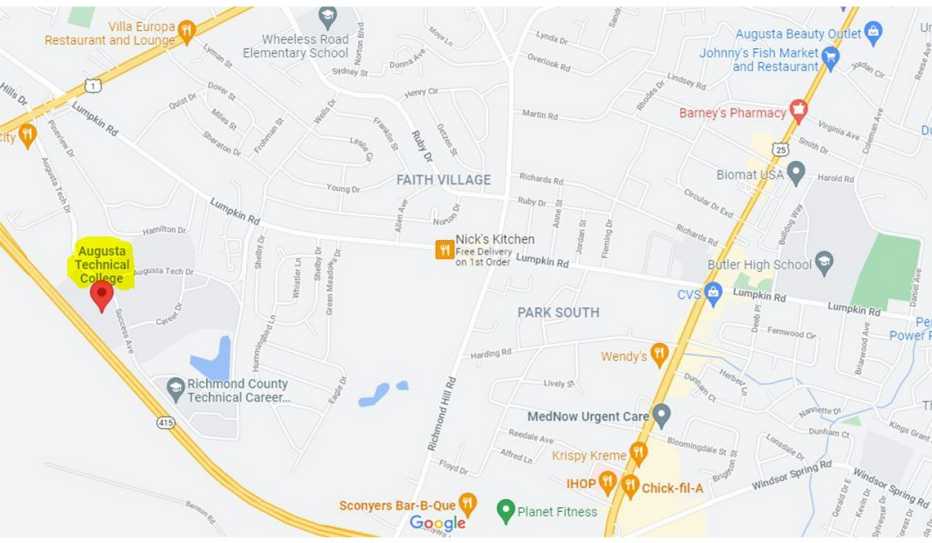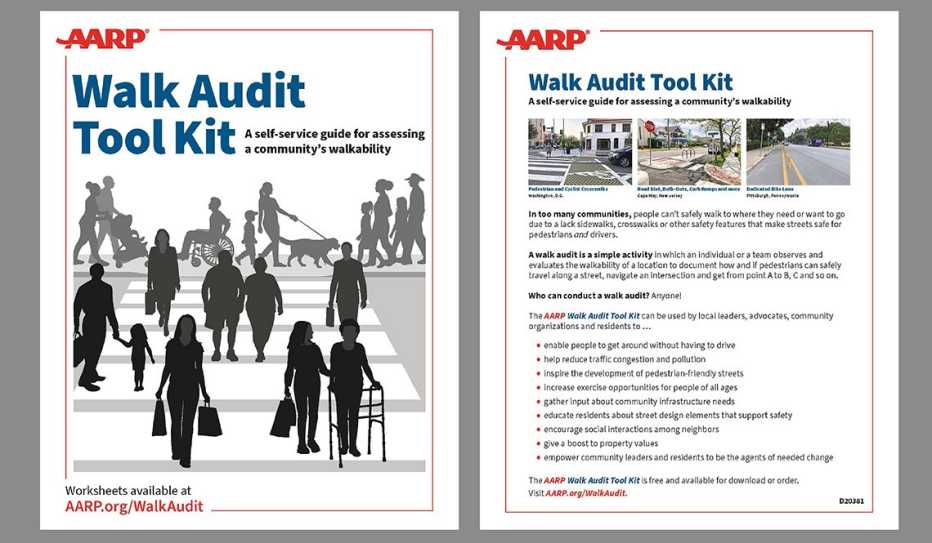AARP Hearing Center
Following is an AARP summary of the walking action plan developed by David Maryniak, a State Walking College Fellow, for the Augusta Technical College campus.


David Maryniak
State Walking College Fellow
Class of 2021


David Maryniak was raised in a farming community near Buffalo, New York. He majored in chemistry of the Rochester Institute of Technology and earned his Ph.D., from the University of South Carolina. He has been a professor at Augusta Technical College since 1993 and is chair of the school's chemistry department.
PLAN VISION AND GOALS
- Create a multipurpose trail that will promote health and well-being by facilitating outdoor activity on and near the campus of Augusta Technical College
- Increase awareness about — and enthusiasm for — walking and cycling as a mode of transportation by making the college campus a community resource for walking, cycling and enjoying nature
The initial efforts will focus on creating a suitable trail. Long-term goals include creating a garden oasis within the trail; raising environmental awareness; and supporting research by establishing a “stream keepers” club and other outdoor clubs.
THE LOCATION
Established in 1981, the Augusta Technical College is located next to I-520. The Richmond County Technical Career Magnet School, located to the south of the college, was built in 2015 on a site that had been the county’s bus depot. State property between the schools includes a heavily wooded area and a retention pond.
A walk audit of the area showed that the area is somewhat walkable but the surrounding streets and roads are hazardous and unpleasant.
POTENTIAL COMMUNITY PARTNERS
- Augusta Technical College
- Richmond County Technical Career Magnet School
- Georgia Department of Natural Resources
- Savannah Riverkeeper
- AARP Georgia
THE PLAN
- Have volunteers walk the trail to assess its safety and aesthetics. (When done, plan an event for the community at-large.)
- Ask the student government to create an outdoors club to develop rules for the trail, promote the trail, monitor use and resolve any conflicts that develop
- Create a garden and initiate an environmental monitoring program
- Investigate the possibility and pros and cons of paving the trail
- Connect the trail to the existing sidewalks on Lumpkin and Deans Bridge roads.
“Being a part of nature, especially when done with others, builds lasting relationships, gives an appreciation for our environment, and provides health benefits. My dream for our community is to have an active area for people to enjoy nature and spending time with one another.” — David Maryniak
POTENTIAL CHALLENGES
- Liability and accessibility
- A lack of community interest
EVALUATING SUCCESS
- The trail’s safety will be evaluated by a faculty senate
- An annual community survey will evaluate the benefits of the trail to its users, the college and the community
- The project’s environmental monitoring results will be documented
WHAT’S BEEN ACCOMPLISHED SO FAR
As of February 2022:
Trail construction began in the fall of 2021. Briars as well as hazardous and non-native trees were identified and removed. The trail was raked and walked by several faculty members and a few students.
The Georgia forestry website was a great help, says Maryniak, and the book Trail Solutions by the International Mountain Bicycling Association helped guide the initial trail concepts.
A clearing with a great view of the pond will become a community garden and spot for relaxing. The hope is that up to three miles of the trail will be completed before year's end.
Maryniak has also been monitoring (and documenting) the pollution run-off from the nearby expressway and various parking lots.
Page published March 2022

































































